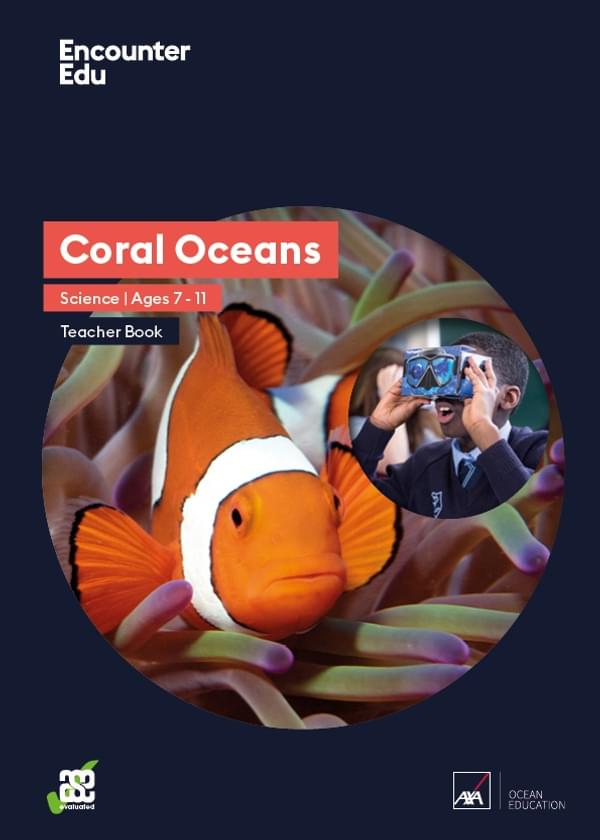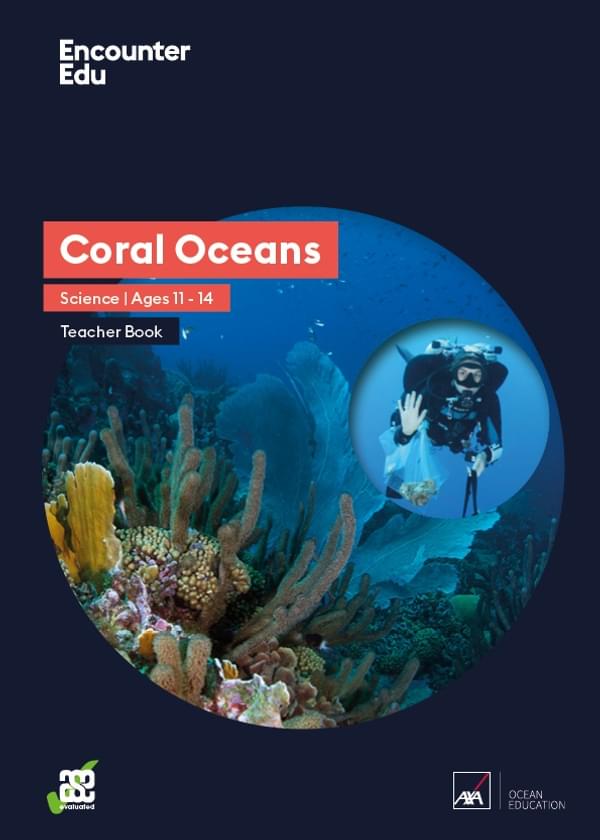Coral feeding game
Do you know how corals get their energy? Try and model how most corals change from getting their energy from photosynthesis via the zooxanthellae, to using their tentacles and stinging cells to catch zooplankton (microscopic animals, larvae and eggs).
Ages 7+
15 minutes
Part of:
AXA Ocean EducationCorals get their energy in two different ways. This fun game will explain both, and help you to understand how a static coral can feed on detritus in the water.
Activity steps
- Put on a glove.
- Mark the gloved back of the hand with green dots using stickers or a green marker pen. These dots represent the algae (zooxanthellae) within the coral polyp.
- Stick squares of double-sided sticky tape around each gloved finger. The stickiness represents the stinging cells on each tentacle / finger.
- Create a sleeve out of the paper bag or paper that fits your hand. This represents the corallite or limestone cup that the polyp lives in.
- The gloved hands will be closed into a fist during the day. This protects the tentacles from predators, and the algae (zooxanthellae) will still be exposed to sunlight, which provides the coral with between 70% and 90% of its energy via photosynthesis.
- At night, the polyps open up and feed on zooplankton. If you are in a group, sitting next to someone else, you could represent a small coral colony.
- Close your eyes and get ready to try to catch zooplankton with your fingers. One of your team members can scatter cotton wool (representing zooplankton) over each coral colony.
- Open your eyes to see how much zooplankton you have caught.
Safety guidance
- Check there are no allergies to the glove material.
Brought to you by

Celebrating


Science | Ages 7-11
Coral Oceans
These resources for ages 7-11 are based on the journeys undertaken by science teams taking part in the XL Catlin Seaview Survey expeditions. These resources present a complete scheme of work for the science classroom, covering core science and sustainability curriculum areas as well as enhancing students' creative and communications skills.

Science | Ages 11-14
Coral Oceans
These resources for ages 11-14 are based on the journeys undertaken by science teams taking part in the XL Catlin Seaview Survey expeditions. Starting with the Great Barrier Reef in 2012, these expeditions seek to create a baseline survey of the world's reefs as well as more in-depth research on the deep reef lying between 30m and 100m.